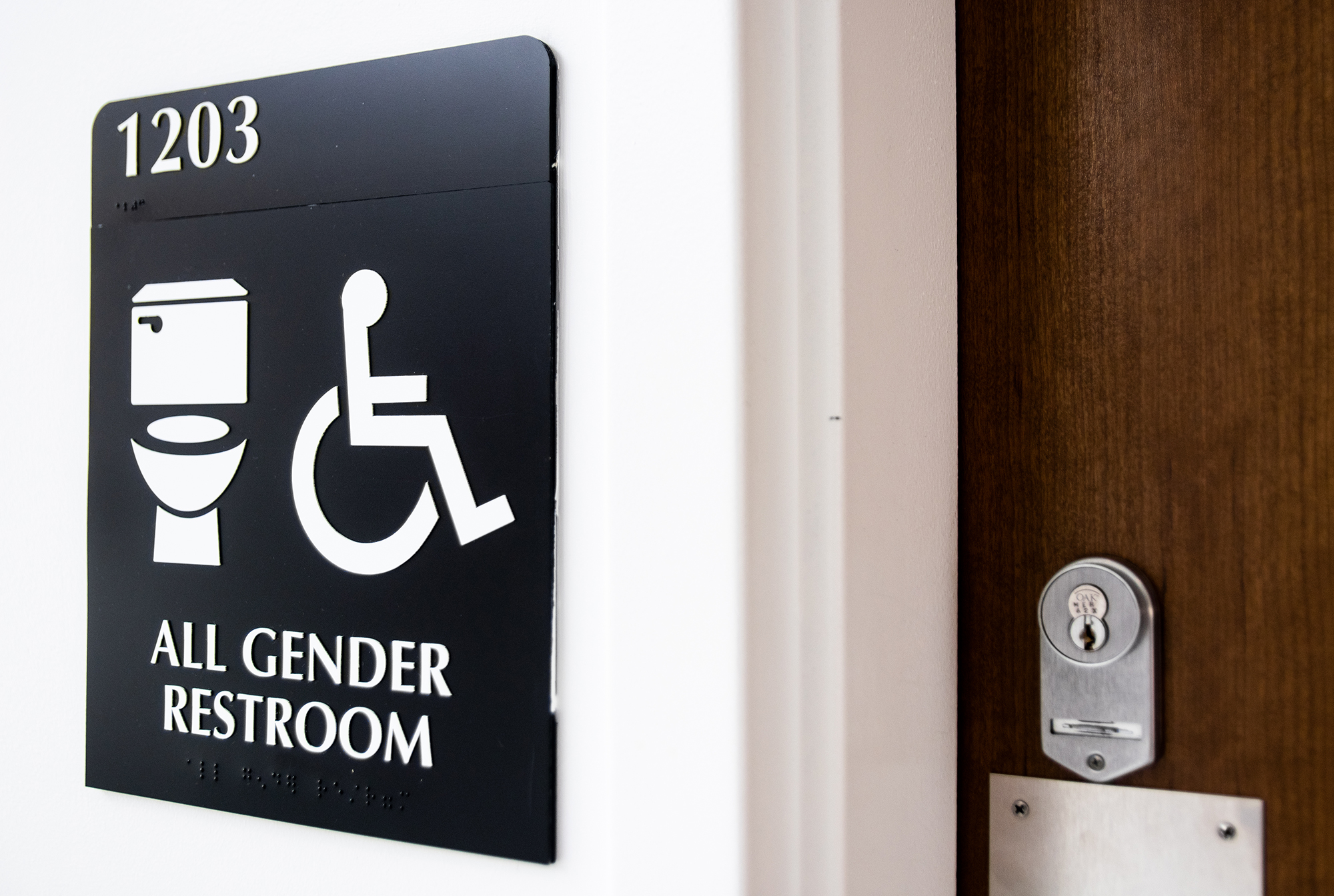Views expressed in opinion columns are the author’s own.
As both an only child and an extrovert, I’ve always valued my alone time. After long periods of social interactions, there is nothing I love more than sitting alone in my bedroom with the door closed.
Sometimes waiting all day for that moment is impossible and I need a moment of salvation. Given my body’s requirement to take a break from the crowd every hour or so to use the restroom, I’ve found solace in the few single-stall, gender-neutral restrooms to hit two birds with one stone: relieve myself and regain my sanity with a few minutes of alone time. Yet, to my dismay, not all buildings have these necessary and appreciated areas of refuge.
While this is a minor inconvenience for me, it could be catastrophic for transgender students. Considering 63.4 percent of transgender students reported avoiding bathrooms, not having the option of a single-stall, all-gender restroom can turn typical school functions into a burden.
Given that the University of Maryland was ranked in the top 15 schools in the nation for LGBTQ+ students and that it is no stranger to large-scale construction projects, it is imperative that the administration lives up to its reputation and puts its money where its mouth is. This university should strive to construct at least one single-stall, all-gender restroom in each building on this campus.
This university’s LGBTQ+ Equity Center offers several resources for LGBTQ+ students, including a map of all-gender restrooms around campus. I was shocked to find that some of the most popular campus buildings such as Van Munching Hall, Symons Hall, the Skinner Building and the Biology-Psychology Building did not have an all-gender restroom noted on the map.
Consequently, students who value these facilities have to either brave the gendered bathrooms, or sit in discomfort until they have the chance to venture to a single-stall bathroom elsewhere. At a university as forward-thinking and modern as this one, this is an unacceptable — and completely avoidable — circumstance.
Opponents of single-stall, all-gender restrooms could argue that about only 1.6 percent of American adults identify as transgender or nonbinary, meaning that a hypothetical plan to have at least one single-stall, all-gender restroom could be a costly solution to a problem that affects a small few.
However, it is dangerous to label this hypothetical as something that will only benefit transgender and gender non-conforming people. This is simply a matter of public health. Single-stall restrooms could help make people with paruresis feel more comfortable carrying out the unavoidable task of using the restroom while on campus.
Paruresis, commonly known as shy bladder syndrome, is a condition where one has extreme amounts of anxiety when it comes to using the public restroom, which could cause an inability to relieve themselves. People with paruresis could miss out on academic, professional, and social opportunities out of a lack of access to a comfortable restroom.
What’s worse is that some studies suggest upwards of 25 percent of Americans suffer from some degree of paruresis, proving that constructing single-stall, all-gender restrooms could benefit many students, even if it simply means giving them a small space of privacy on a hectic campus.
A construction project like this will not be cheap. However, it should be noted that according to the campus map, a majority of campus buildings already have these types of bathrooms — but not all. The project costs could decrease if the focus shifted solely to constructing single-stall, all-gender restrooms where they are not present as opposed to redoing all campus restrooms.
In addition, entire new building wings or complete construction overhauls likely won’t be needed to make these changes. Constructing a simple dividing wall to partition a single-stall restroom out of an existing larger and single-gender bathroom and subsequently adding in a sink could suffice.
This could make some bathrooms temporarily inoperable and plumbing may need reconfiguring, but these minor inconveniences in the short term are worth the privacy, security and comfort in the long term. Any plan that brings this element of privacy to all of our campus buildings is sufficient and necessary.
Building single-stall, all-gender restrooms would undeniably provide many benefits to students at this university. If the user is escaping potential violence or anxiety in one of the gendered bathrooms or if they simply need a space to regain their composure during the day, spaces like these would improve the campus experience for all students. It is clear that this university must incorporate single-stall, all-gender restrooms into its future construction plans.
Anthony Liberatori is a senior environmental science and economics major. He can be reached at alib1204@umd.edu.



